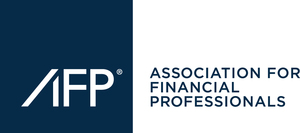Survey: AFP Releases Key Benchmarks for Companies Calculating Cost of Capital
Few companies have confidence in their own cost of capital calculations
WASHINGTON, Oct. 28, 2013 /PRNewswire/ -- The methods that financial professionals typically use to assess the future performance of their organization's strategic investments are critical to future success. A new report, Current Trends in Estimating and Applying the Cost of Capital, released today by the Association for Financial Professionals (AFP), allows companies to compare techniques against those of other organizations.
"Decisions about strategic investments can define the future of the company. Yet, very few companies are confident that their cost of capital estimates are accurate," said Jim Kaitz, AFP's president and CEO. "We believe that achieving standards in financial planning and analysis for professional staff, and understanding the tools and practices that successful companies use will be critical to corporate decision making in the future."
The report, which is part of AFP's ongoing benchmarking and standard-setting in the field of corporate financial planning and analysis, updates a comprehensive study originally launched in 2010.
Among the findings in the 2013 report:
- Small fluctuations in cost of capital can create huge swings in discounted cash flow figures strongly affecting strategic decisions about future capital investments and acquisitions.
- A majority of organizations continue to use the Capital Asset Pricing Model (CAPM) for estimating their cost of equity, with considerable variance in how they apply the model.
- For estimating a risk-free rate, most organizations adopt a long-term view and use instruments with maturities of five years and longer. Since AFP's original 2010 study and following the S&P downgrade of U.S. sovereign debt during the summer of 2011, however, more companies are using short-term instruments.
- Compared to 2010, more organizations are imposing a cap or floor on the risk-free rate used to evaluate projects and investment, reflecting a riskier environment today.
- Only two of five organizations that use current or target market values to calculate weight for WACC analysis use current or forward looking measures. The rest use historical weights or book values.
- Only 22 percent of FP&A professionals believe that their cost-of-capital estimates accurately reflect the actual cost of capital, or that the estimate is within 25 basis points of the actual cost of capital.
Download AFP's 2013 report, Current Trends in Estimating and Applying the Cost of Capital on www.afponline.org/capital
ABOUT THE SURVEY
In July 2013, AFP sent a 35-question survey to senior-level corporate practitioner members and prospects with job titles including CFO, Treasurer, and Director of Finance, generating 424 responses from both public and private organizations spanning a wide range of industries, with the largest concentration in the manufacturing industry.
ABOUT AFP ®
Headquartered outside Washington, D.C., the Association for Financial Professionals (AFP) is the professional society that represents finance executives globally. AFP established and administers the Certified Treasury Professional and Certified Corporate FP&A Professional credentials, which set standards of excellence in finance. The quarterly AFP Corporate Cash Indicators serve as a bellwether of economic growth. The AFP Annual Conference is the largest networking event for corporate finance professionals in the world.
AFP, Association for Financial Professionals, Certified Treasury Professional, and Certified Corporate Financial Planning & Analysis Professional are registered trademarks of the Association for Financial Professionals.© 2013 Association for Financial Professionals, Inc. All Rights Reserved.
SOURCE Association for Financial Professionals
WANT YOUR COMPANY'S NEWS FEATURED ON PRNEWSWIRE.COM?
Newsrooms &
Influencers
Digital Media
Outlets
Journalists
Opted In



Share this article